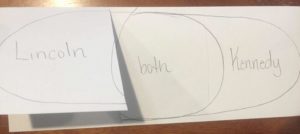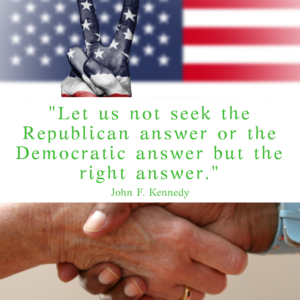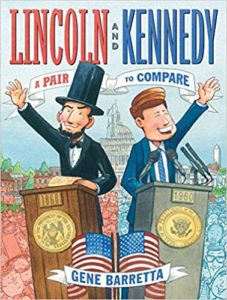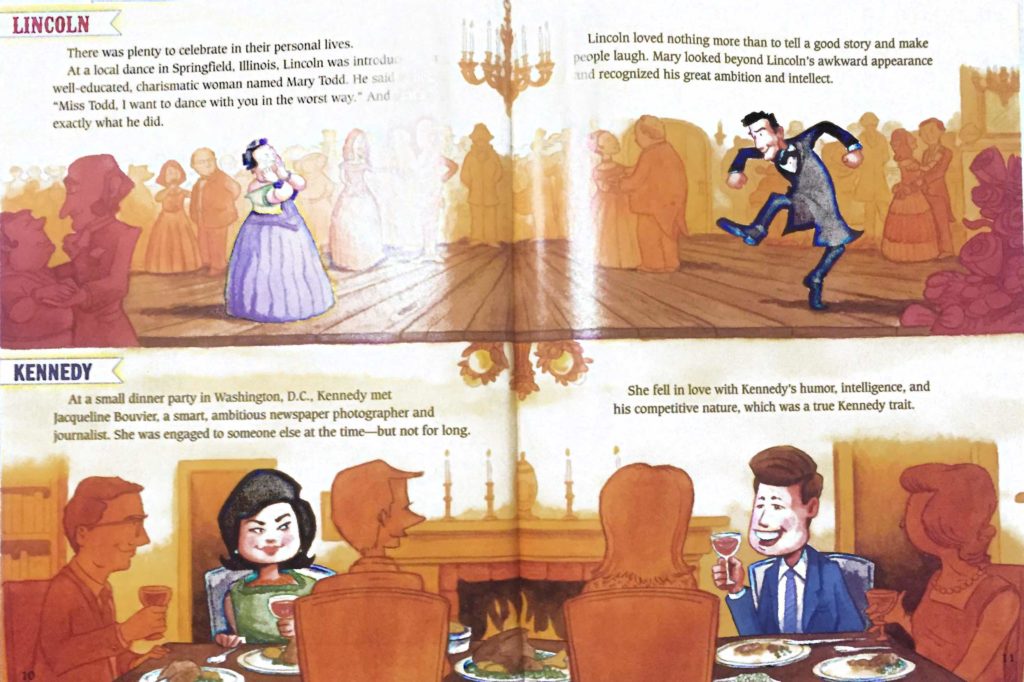About two years ago I found and immediately loved two of Gene Barretta’s other books (which I reviewed here). Historical Fusions is one of our most requested sessions where we show how to fuse together social studies, ELA/R, and technology, so I HAD to get this book. That is how I justified this purchase to the husband!
Why I Finished It:
Gene Barretta is the master at leveraging attention span! Discussing the lives of Lincoln and Kennedy in a picture book doesn’t even seem possible, but through manageable text, fun illustrations, and engaging language, this book is sure to entice all students. As the title suggests, Barretta compares the two future presidents from birth, through marriage, and presidency. I actually know quite a bit of “textbook-type” information on both presidents and some of that was in this book, but there were also facts and information that I didn’t know. I didn’t know Jackie O. was engaged when she first met Kennedy! I didn’t know about their jobs prior to the presidency and other such interesting information. Like Barretta’s other picture books, each page will compare and contrast both presidents, making their lives more accessible and relatable to students of any age.
Who I Would Give It To:
After reading Now and Ben and Timeless Thomas to a third-grade class who absolutely loved the book, I can firmly say that all elementary classes should have Barretta’s books. They help teach the nonfiction compare-and-contrast structure, they explain history in engaging ways, and they’re just fun!
Integration Ideas:
Reading – Nonfiction Text Structures (Determining Importance)
Students need to understand the five different nonfiction text structures. This text is obviously compare and contrast. So have students complete a Venn-Diagram while reading the book. Remember, that students should be making THEIR OWN graphic organizers. We want the students to be independent and not rely on us to provide them papers so they can read. There is way too much information in this book, so students should choose what they think are the most important topics of comparison. Give the students a limit (such as five things for each part of the diagram) and then have them explain why they chose the facts that they did. This will encourage them to think through their selections. 
Reread to find signal words in the text, these are words that help students understand that two events, people, or ideas are being compared or contrasted. Some of the signal words will be: both, same as, similar to, but, on the other hand, etc. When you come upon these words don’t just list them and tell the kids, have a quick discussion about what effect the word has on the rest of the text!
Quote Connections (Text-to-Text and Text-to-World)
This book has some fun backmatter (Yep, that’s what the information pages at the end of a nonfiction text is called … backmatter. Feel free to laugh. I do). This book provides a two-page spread of both Lincoln and Kennedy. On the pages, you are given facts of them in office, a cartoon family portrait, trivia, and famous quotes by the president. Have students choose one of the quotes and analyze it.
- What connections can be drawn to the president’s life given this quote?
- What does the quote mean?
- How does the quote represent the president?
- What is the connection between the time period and the quote?
- How relevant is the quote today?
Have the students create a graphic (Canva is one of our favorite tools) to present the quote and share their analysis.
Character Portrait
Even though this is a nonfiction text, the students can choose Lincoln or Kennedy to analyze as a character. Have students choose adjectives that describe their character traits and explain why using facts from the text. Using multimedia or large butcher paper they can create a portrait of the president and write the words and evidence around him.

Research and Writing – Compare and Contrast
Student, especially in elementary, don’t necessarily NEED to write compare and contrast essays, but this is a great time to practice. Have students choose two famous people (musicians, historical figures, actors, activists, etc.) to compare and contrast. Have students conduct informal research on both people to learn a little more. I would have students choose three different topics (e.g. school, family, work, obstacles, etc.). Then research those areas for both people to find ways they are similar and ways they are different.Using the signal words discussed earlier, have students write a paper comparing and contrasting the two people.
Illustrate it with a compare/contrast infographic! Easel.ly and Canva both have great templates!
Writing – Explaining
At the end of the story, Gene Barretta proposes the question: What will YOUR legacy be? and I LOVE IT! We might not wind up being president, but we can all leave a legacy to some degree. Explain that a legacy is really something handed to down from generation to generation. As a class brainstorm some ideas of legacies they might leave behind. This question is more than likely too difficult for elementary students to think of without class support. Open up a discussion, lead the discussion, and share ideas now and then. Make sure everyone has an idea and then give them time to answer the question in writing. It would be awesome for the students to create artwork to go with this one!
How will you use this book?








Leave a Reply